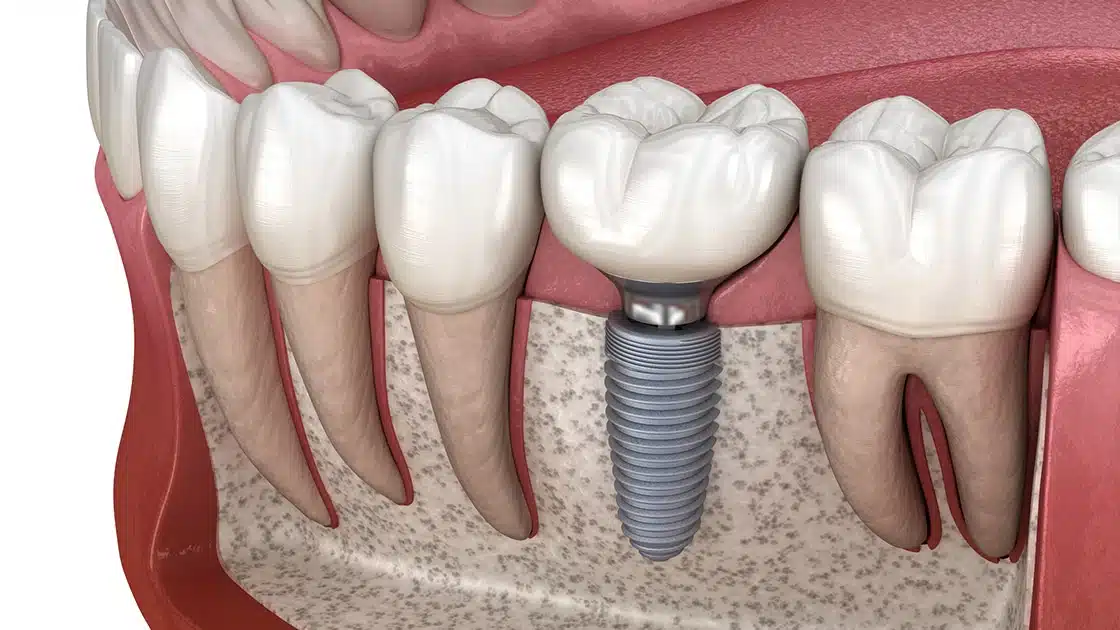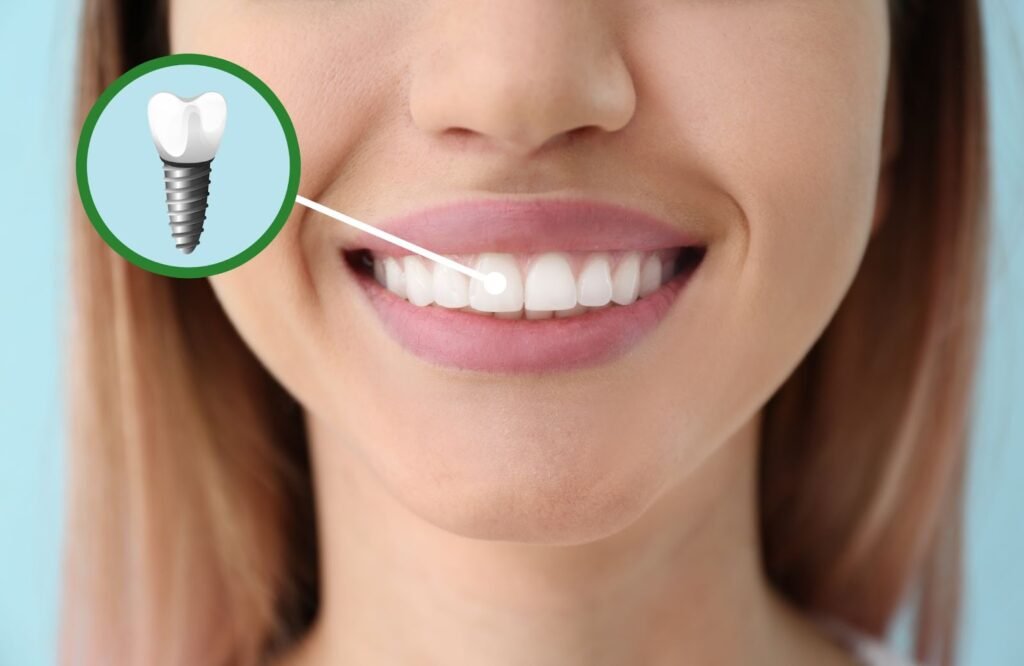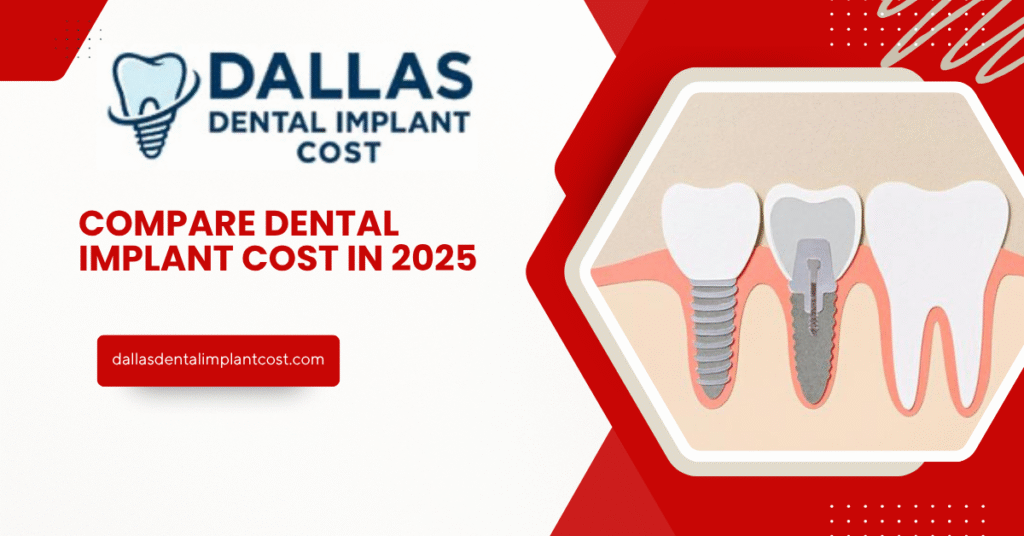Have you ever looked in the mirror and wished for a complete smile again? Perhaps you’re missing a tooth or several, and you’ve heard about dental implants as the gold standard for tooth replacement. It’s an exciting prospect, offering a permanent, natural-looking solution that can truly transform your life. However, one of the first questions that naturally comes to mind for most people, myself included, is: “What will this cost?” 🤔
Navigating the world of dental implant pricing can feel like trying to solve a complex puzzle. You might get vastly different quotes from various clinics, leaving you wondering why there’s such a wide range. As someone who’s delved deep into understanding this process, I know firsthand that comparing dental implant cost isn’t as simple as checking a price tag. It involves understanding numerous factors, from the type of implant to the procedures involved and even the location of your dentist. In this comprehensive guide, I aim to demystify dental implant costs for you in 2025, providing clarity and empowering you to make an informed decision about your smile investment. Let’s break down everything you need to know to effectively compare dental implant cost and find the best solution for your needs.
Key Takeaways
- Costs Vary Widely: Dental implant costs in 2025 can range significantly based on factors like the number of implants, type of procedure, materials, geographic location, and the dentist’s experience.
- Total Cost Includes More Than Just the Implant: Be aware that the overall price typically covers the implant post, abutment, crown, and often includes initial consultations, X-rays, and follow-up care. Ancillary procedures like bone grafts can add to the total.
- Explore Financing Options: While dental insurance often has limitations, payment plans, third-party financing, HSAs, FSAs, and even dental schools can help make implants more affordable.
- Prioritize Quality and Experience: Don’t let cost be the only deciding factor. The long-term success of your implant depends heavily on the skill of your dental professional and the quality of materials used.
- Ask Detailed Questions: Always get a comprehensive, itemized quote and understand exactly what’s included. Ask about potential additional costs, warranty information, and the dentist’s experience.

What Exactly Are Dental Implants?
Before we dive into comparing costs, let’s quickly clarify what we’re talking about. Dental implants are essentially artificial tooth roots, usually made of titanium or zirconia, that are surgically placed into your jawbone. These posts act as a sturdy foundation for replacement teeth (crowns), bridges, or even full dentures. Unlike traditional bridges that rely on neighboring teeth for support, or dentures that can slip, implants are designed to be a permanent solution that looks, feels, and functions much like natural teeth. They help preserve jawbone health and facial structure, which can deteriorate when teeth are missing.
“Dental implants are not just about replacing a tooth; they’re about restoring confidence, function, and the long-term health of your entire mouth.”
Why Do Dental Implant Costs Vary So Much?
This is the million-dollar question, and frankly, the core reason why it’s so challenging to compare dental implant cost directly. There isn’t a single, fixed price because each patient’s situation is unique, and the procedure involves multiple components and services. Let me walk you through the primary factors that influence the final price tag.

1. Number of Implants Needed
This is perhaps the most obvious factor.
- Single Dental Implant: If you’re only replacing one tooth, you’ll need one implant post, one abutment, and one crown.
- Multiple Implants: Replacing several teeth might involve multiple individual implants or a bridge supported by two or more implants.
- Full Arch Implants (e.g., All-on-4, All-on-6): For replacing an entire upper or lower set of teeth, specialized techniques like All-on-4 or All-on-6 use a strategic placement of typically four to six implants to support a full arch of prosthetic teeth. This is a more extensive procedure and naturally, has a higher overall cost.
2. Type of Implant and Materials Used
Not all implants are created equal.
- Endosteal Implants: These are the most common type, surgically placed directly into the jawbone. They come in various shapes and sizes.
- Subperiosteal Implants: Less common now, these rest on top of the jawbone but under the gum tissue. They are typically used for patients who cannot wear conventional dentures and have minimal bone height.
- All-on-4/All-on-6: As mentioned, these are specific techniques for full-arch restoration.
- Implant Material: Most implants are made from biocompatible titanium, known for its strength and ability to fuse with bone. Zirconia implants are a newer, metal-free alternative that some patients prefer for aesthetic reasons or if they have metal sensitivities. Zirconia can sometimes be more expensive.
- Crown Material: The visible part of the implant (the crown) can be made from various materials like porcelain, ceramic, porcelain-fused-to-metal (PFM), or zirconia. The choice impacts aesthetics, durability, and cost.
3. Geographic Location of the Clinic 🌍
Just like real estate, dental services are influenced by location.
- Urban vs. Rural: Clinics in major metropolitan areas or affluent neighborhoods often have higher overheads (rent, staff salaries) which can translate to higher prices.
- Country-Specific Costs: Costs can vary dramatically between different countries. Dental tourism, where patients travel abroad for treatment, is often driven by these price differences, though it comes with its own set of considerations.
4. The Dentist’s Experience and Specialization
You’re not just paying for the implant; you’re paying for the skill and expertise of the person performing the surgery.
- General Dentist vs. Specialist: An oral surgeon, periodontist, or prosthodontist who specializes in implant dentistry may charge more than a general dentist, but they also bring a higher level of specialized training and experience to complex cases.
- Reputation and Technology: Highly reputable clinics with state-of-the-art technology (e.g., 3D imaging, guided surgery) and extensive experience in successful implant placements might have higher fees. I always advise considering this an investment in quality outcomes.
5. Ancillary Procedures (Additional Treatments)
This is where many people get surprised by the “hidden” costs. Not everyone has enough healthy jawbone to support an implant immediately.
- Bone Grafting: If your jawbone is too thin or soft, a bone graft might be necessary to build up sufficient bone mass. This can add significantly to the overall cost and treatment time.
- Sinus Lift (Sinus Augmentation): If implants are needed in the upper jaw, and the sinus cavity is too close to the jawbone, a sinus lift might be performed to add bone to the area.
- Tooth Extraction: If the damaged tooth still needs to be removed, that’s an additional procedure.
- Gum Disease Treatment: Any existing gum disease must be treated before implant placement to ensure a healthy foundation.
- Temporary Prosthesis: While your implant heals, you might need a temporary crown or denture, which is an additional cost.
6. Sedation Options
For patients with dental anxiety or those undergoing more extensive procedures, various sedation options are available, from local anesthesia (usually included) to nitrous oxide, oral sedation, or IV sedation. The type of sedation and the need for an anesthesiologist will affect the total price.
7. Lab Fees and Technology Used
The quality of the dental lab and the technology used to design and fabricate your custom crown or prosthesis play a role. High-quality labs using advanced materials and techniques will naturally charge more, but this often translates to a better fit, appearance, and longevity for your final restoration.
8. Warranty and Follow-up Care
Some clinics offer a warranty on their implants or include post-operative check-ups and adjustments in their overall fee. It’s important to clarify what follow-up care is included and for how long.
Breaking Down the Cost: What’s Included?
When you receive a quote, it’s vital to understand what each component covers. Let’s look at the typical elements that contribute to the overall dental implant cost.
- Initial Consultation and Diagnostics:
- This usually includes the first visit, examination, X-rays (panoramic, periapical), and sometimes a 3D CT scan. These diagnostics are crucial for planning the implant placement precisely.
- Cost Range (as of 2025): Often $100 – $500, though some clinics offer free initial consultations.
- The Implant Post Itself:
- This is the titanium or zirconia screw that’s surgically placed into your jawbone.
- Cost Range (as of 2025): Typically $1,500 – $3,000 per implant, not including surgery.
- Implant Placement Surgery:
- The surgical procedure to place the implant post into your jawbone. This fee covers the dentist’s time, surgical instruments, and local anesthesia.
- Cost Range (as of 2025): Usually $1,000 – $2,500 per implant.
- Abutment:
- A connector piece that attaches to the implant post and extends above the gum line, serving as the base for your crown.
- Cost Range (as of 2025): Generally $300 – $600 per abutment.
- Dental Crown (Prosthesis):
- The visible, tooth-like cap that is custom-made to match your natural teeth and cemented onto the abutment.
- Cost Range (as of 2025): Varies significantly by material, but typically $1,000 – $3,000 per crown.
- Follow-up Appointments and Adjustments:
- Post-surgical checks, removal of sutures, and ensuring the implant is healing properly.
- Cost (as of 2025): Often included in the overall fee, but always confirm.
Total Estimated Cost for a Single Dental Implant (Excluding Ancillary Procedures):
Based on these ranges, you can expect a single dental implant (post, surgery, abutment, and crown) to cost anywhere from $3,900 to $9,100 or more per tooth in 2025. Remember, this is a broad estimate, and individual cases will vary.
Average Cost Ranges for Different Scenarios (as of 2025)
To help you better compare dental implant cost, here’s a general overview of what you might expect for different treatment plans in 2025. Please keep in mind these are averages and can fluctuate based on all the factors we’ve discussed.
| Procedure Type | Estimated Cost Range (USD) – 2025 | Notes
| Single Tooth Implant | $3,000 – $6,500 | Includes implant, abutment, and crown. Excludes any preliminary treatments. A lot of the time the content for my clients would be generated for a dental implant clinic in the USA.
Financing Your Dental Implants in 2025 💰
Given the significant investment, many patients worry about how to afford dental implants. Fortunately, there are several avenues you can explore.
1. Dental Insurance (with limitations)
While some premium dental insurance plans may offer partial coverage for dental implants, many treat them as a “major procedure” and only cover a small percentage, or not at all. It’s crucial to:
- Check Your Policy: Contact your insurance provider directly and ask specifically about coverage for dental implants (CDT codes D6010 for implant placement, D6057 for abutment, D6058 for crown).
- Understand Limitations: Be aware of annual maximums, deductibles, and waiting periods.
- Medical vs. Dental: In some rare cases, if tooth loss is due to a medical condition or accident, part of the procedure might be covered by medical insurance.
2. Payment Plans and Third-Party Financing
Most dental offices understand the financial burden and offer solutions:
- In-Office Payment Plans: Many clinics allow you to pay for your treatment in installments over several months, often interest-free, especially for the implant component.
- Third-Party Medical Financing: Companies like CareCredit, LendingClub, or Alphaeon Credit specialize in healthcare financing. They offer various plans, including short-term interest-free options or longer-term plans with fixed interest rates.
3. Health Savings Accounts (HSAs) & Flexible Spending Accounts (FSAs)
If you have an HSA or FSA through your employer, these are excellent ways to pay for dental implants with pre-tax dollars. Since dental implants are considered a legitimate medical expense, you can use these funds to cover the costs, effectively saving you money.
4. Dental Schools and Teaching Clinics
Dental schools often offer treatments at a reduced cost. Procedures are performed by supervised dental students or residents, meaning you might get top-notch care under the watchful eye of experienced professors. The trade-off can be longer appointment times and a more structured scheduling process. This can be a great option if you’re looking to compare dental implant cost and save money.
5. Dental Tourism
Traveling to another country for dental work, often called dental tourism, can offer significant savings. Countries like Mexico, Costa Rica, or some in Eastern Europe are known for more affordable dental implant costs. However, consider the following:
- Quality Control: Research clinics thoroughly, check credentials, and read reviews.
- Travel Costs: Factor in flights, accommodation, and time off work.
- Follow-up Care: What happens if you have complications once you return home? Ensure there’s a clear plan for post-treatment care.
- Language Barriers: Ensure clear communication with your dental team.
“Don’t let the upfront cost deter you. Many financing solutions exist to make dental implants accessible, and the long-term benefits often outweigh the initial expense.”
Questions to Ask Your Dentist When Getting a Quote ✅
When you’re ready to compare dental implant cost, don’t just ask for a single number. Arm yourself with specific questions to ensure you understand the full scope of treatment and its associated expenses.
- What is the total cost for my entire dental implant treatment, from start to finish?
- This is crucial to avoid piecemeal quotes that don’t reflect the full investment.
- Please provide a detailed, itemized breakdown of all costs.
- This should clearly list the implant post, surgical fee, abutment, crown, initial diagnostics, and any necessary ancillary procedures (bone graft, extraction, etc.).
- Are there any potential additional costs I should be aware of that are not included in this quote?
- Sometimes things like temporary prostheses, specific types of sedation, or post-operative medications might be extra.
- What type of implant system and materials will be used (e.g., titanium vs. zirconia, specific brand)?
- Higher quality materials and reputable brands often come with better long-term success rates.
- What is your experience and success rate with dental implant procedures?
- Ask about the number of implants they’ve placed and their training.
- What are your recommendations for financing or payment plans?
- Inquire about in-house options or third-party lenders they work with.
- What is your policy on follow-up care and warranties?
- Understand what’s covered if there are issues after the implant is placed.
- How long will the entire process take, from the initial consultation to the placement of the final crown?
- This helps you plan your time and understand the healing periods.
- What are the risks and benefits specific to my case?
- A good dentist will discuss potential complications and ensure you have realistic expectations.
- Can I see before-and-after photos of similar cases you’ve treated?
- This can give you confidence in their aesthetic results.
By asking these questions, you’ll gain a much clearer picture, not only of the cost but also of the overall quality of care you can expect. This level of detail is essential when you compare dental implant cost.
Making an Informed Decision: My Advice
Choosing to get dental implants is a significant decision for your oral health and overall well-being. It’s an investment that can last a lifetime, so it’s important to approach it thoughtfully. Here’s my advice:
- Don’t Rush the Process: Take your time to research, consult with multiple dentists, and understand all your options. Don’t feel pressured into making a quick decision.
- Prioritize Quality Over Lowest Price: While it’s natural to want to save money, choosing the cheapest option can sometimes lead to complications, discomfort, or even implant failure in the long run. The skill of the surgeon and the quality of materials are paramount. A failed implant can end up costing you more in corrective procedures.
- Read Reviews and Check Credentials: Look for dentists with excellent patient reviews, specialized training in implantology, and a proven track record of success. Check if they are members of professional organizations like the American Academy of Implant Dentistry (AAID) or the American Association of Oral and Maxillofacial Surgeons (AAOMS).
- Consider the Long-Term Value: Dental implants, though a higher initial cost, are often more cost-effective over a lifetime compared to bridges or dentures that may need replacement every 5-10 years. They also offer unmatched benefits in terms of comfort, function, and bone preservation.
- Trust Your Gut: Choose a dental team that makes you feel comfortable, answers all your questions patiently, and clearly communicates the entire process. A good relationship with your dentist is invaluable.
In 2025, dental technology continues to advance, making implants more predictable and accessible than ever before. While the cost can seem daunting, remember that you’re investing in your health, your confidence, and your ability to eat, speak, and smile without worry. By understanding the factors that influence pricing, asking the right questions, and exploring financing options, you can confidently compare dental implant cost and embark on your journey to a restored smile. I truly believe it’s one of the best investments you can make in yourself.
Meta Title:
Compare Dental Implant Cost in 2025: Your Guide
Meta Description:
Looking to compare dental implant cost in 2025? Get a comprehensive guide on factors affecting prices, average costs, financing, and key questions to ask your dentist.

